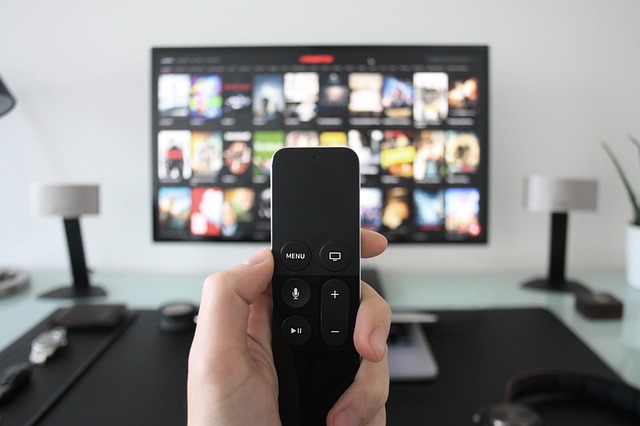
Algorithms play a significant role in our daily lives, recommending content and products on platforms like Spotify, Amazon, Netflix, and Instagram. It’s interesting to note that Netflix claimed in 2017 that about 80 percent of shows are discovered through algorithmic recommendations. However, my personal experience with these platforms often leaves me only moderately enthusiastic. For instance, the series “Tour de France: Unchained” is suggested to me as a 98 percent match, despite my lack of interest in sports documentaries or cycling. Similar perplexity arises on Spotify, Amazon, and Twitter (now X) when I encounter content recommended by their algorithms.
The algorithm of Fire TV collects a lot of data and puts it together. For example, as someone who enjoys jogging, running shoes and sportswear are suitable suggestions. Product relationships are also crucial; mobile phone cases are associated with mobile phones, just like how films in the same genre of books by the same author share connections. Lastly, there can be connections between users. If I share a similar taste in content with another individual, such as the Sherlock Holmes series, there’s a good chance I will enjoy other content that they have also appreciated.
How Does the Algorithm of Movie Recommendations Work?
Recommender systems in machine learning typically fall into two categories: content-based systems and collaborative filtering systems. Combining both approaches, modern recommender systems offer a comprehensive solution.
Now, let’s delve into movie recommendation systems and explore how they function.
1. Content-Based Movie Recommendation Systems: Content-based methods rely on the similarity of movie attributes. These systems recommend similar movies if a user has watched one. For instance, if a user watches a comedy movie starring Adam Sandler, the system suggests movies in the same genre or featuring the same actor. The input for building a content-based recommender system consists of movie attributes.
2. Collaborative Filtering Movie Recommendation Systems: Collaborative filtering systems are based on the user’s past interactions with movies. The input for these systems comprises historical data of user-movie interactions. For example, if user A watches movies M1, M2, and M3, and user B watches movies M1, M3, M4, we can recommend movies M1 and M3 to a similar user C. Reference the figure below for a visual representation.
Main Problem of the Recommendation System
Insufficient data is the most significant drawback of collaborative filter systems. That’s why, when you register, Netflix often asks you to rate content you’ve already seen. However, even this approach has downsides: liking Oppenheimer doesn’t guarantee a preference for all historical films, as another Oppenheimer fan might think. Moreover, some platforms utilize additional data, like age, gender, or online behavior, to filter for similar interests. For instance, providers may track how long users view specific content or the websites they visit.
This vast and ever-expanding information results in an immense matrix, growing with each new user or product. To achieve optimal results, constantly reevaluating the matrix becomes necessary. Even large companies like Netflix and Amazon push their computing capacities to the limit for this task.
How To Reset Movie Recommendations?
#1 Try Using a Streaming Service Anonymously
If available, you can install a VPN and completely reset your preference system. This is relevant for situations when you can use the service without authorization. In fact, an optimized VPN for Fire TV can help you bypass regional restrictions, improve user experience, make videos smoother, and eliminate stuttering. You can install VPN apps on almost any device available to you. Try using it to watch a foreign series.
#2 Reset Account Activity
To maintain your Netflix viewing privacy, follow these steps:
1. On the web, hover over your user icon in the upper right and click “Account.” Then select “Profile and Parental Controls,” and click on your account.
2. Next, click on “Viewing Activity” to hide specific movies or shows. Alternatively, you can click “Hide all” to delete your watch history entirely and start fresh. Unfortunately, you cannot “Unhide” to restore your viewing history.
3. Please note that these controls are not accessible in mobile or smart TV apps.
To reset the YouTube recommendation system, you need to:
1. To access your profile settings on the YouTube app, click on the profile icon located in the upper right corner.
2. Then, proceed to select “Your data in YouTube” and scroll down until you find “YouTube controls”.
3. To disable recommendations, navigate to “YouTube Watch History” and click on “YouTube History”.
4. Then, select “Turn off” and uncheck any or all of the following: “Include the YouTube videos that you watch”, “Include your searches on YouTube”, and “YouTube voice and audio activity”.
If you prefer not to delete your algorithm-driven recommendations, you can create a new profile without any viewing history. Just use an online free VPN in addition to it and you can easily watch content through it that is available in other countries. This applies to Netflix, Hulu, Max and other streaming services. However, some of them require the payment method of the selected country. You can get it if you use multi-currency payment systems.
#3 Help the Recommendation System Become Better
If the recommendation system on streaming services does not work correctly, you have a high chance of losing its benefits. For example, you logged into an account that you haven’t used for a long time and during this time your interests have changed. Maybe you incorrectly indicated your interests when registering or who in your family watched their TV shows through your account.
Over time, if you use your account, the situation will stabilize. But you must help the algorithms too. Be active: put likes on interesting content and dislikes on uninteresting content. Manual content filtering will help.
Conclusion
Considering all the advancements in AI, particularly in language models, it is highly probable that recommendation algorithms will improve their precision in the future. However, as the model size increases, transparency decreases, and it remains unclear which user-related data an algorithm utilizes. Not everyone is impressed by the current advancements.
Tags: algorithm, television


